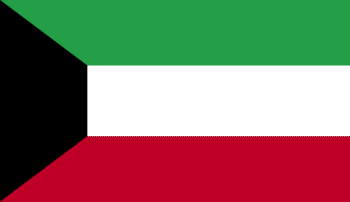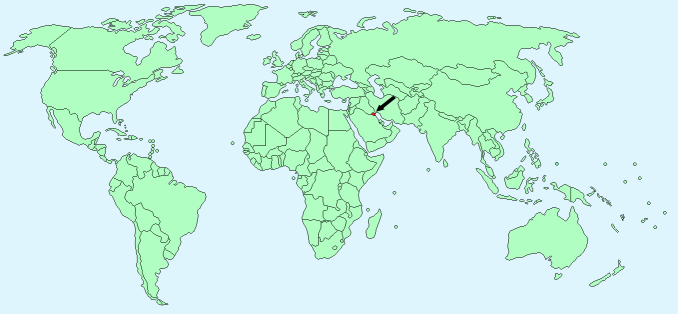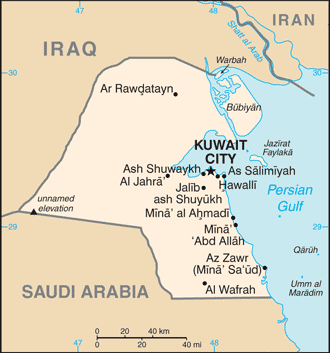Kuwait


Continent – Asia
Region – Middle East
Size – 17,818 km²
Geography – mostly flat desert plains
Language – Arabic (official), English
Religion – Muslim (official) 76.7%, Christian 17.3%, other 6%
Monetary Unit – Kuwaiti dinar
Natural Resources – petroleum, fish, shrimp, natural gas
Agriculture – fish
Industry – petroleum, petrochemicals, cement, shipbuilding and repair, water desalination, food processing, construction materials

Neighbouring Countries – Iraq, Saudi Arabia
Population – 2,742,711 (2014 estimate)
Population Growth Rate – 1.7%
Average Life Expectancy – 76.7
Capital City – Kuwait City (2,406,0000)
Highest Mountain – No mountains
Longest River – No rivers
Climate – dry desert – warm winters 10°C to 15°C and very hot summers 32°C to 43°C
Yearly Rainfall – 20 cm (approx) mostly from October to April
Plant Life – thorny desert shrubs, flowers appear during rainy season only
Animal Life – fox, jackal, desert hares, jerboas, lizards, geckos, and snakes
Bird Life – swallows, wagtails, chiffchaff, skylarks, wrens, eagles, cormorants, hoopoes, and terns
Harvard Reference for this page:
Heather Y Wheeler. (2015). Kuwait. Available: https://www.naturalhistoryonthenet.com/Facts_Figures/Country_Facts/kuwait.htm. Last accessed Monday, July 18, 2016
Facts and Figures Pages
